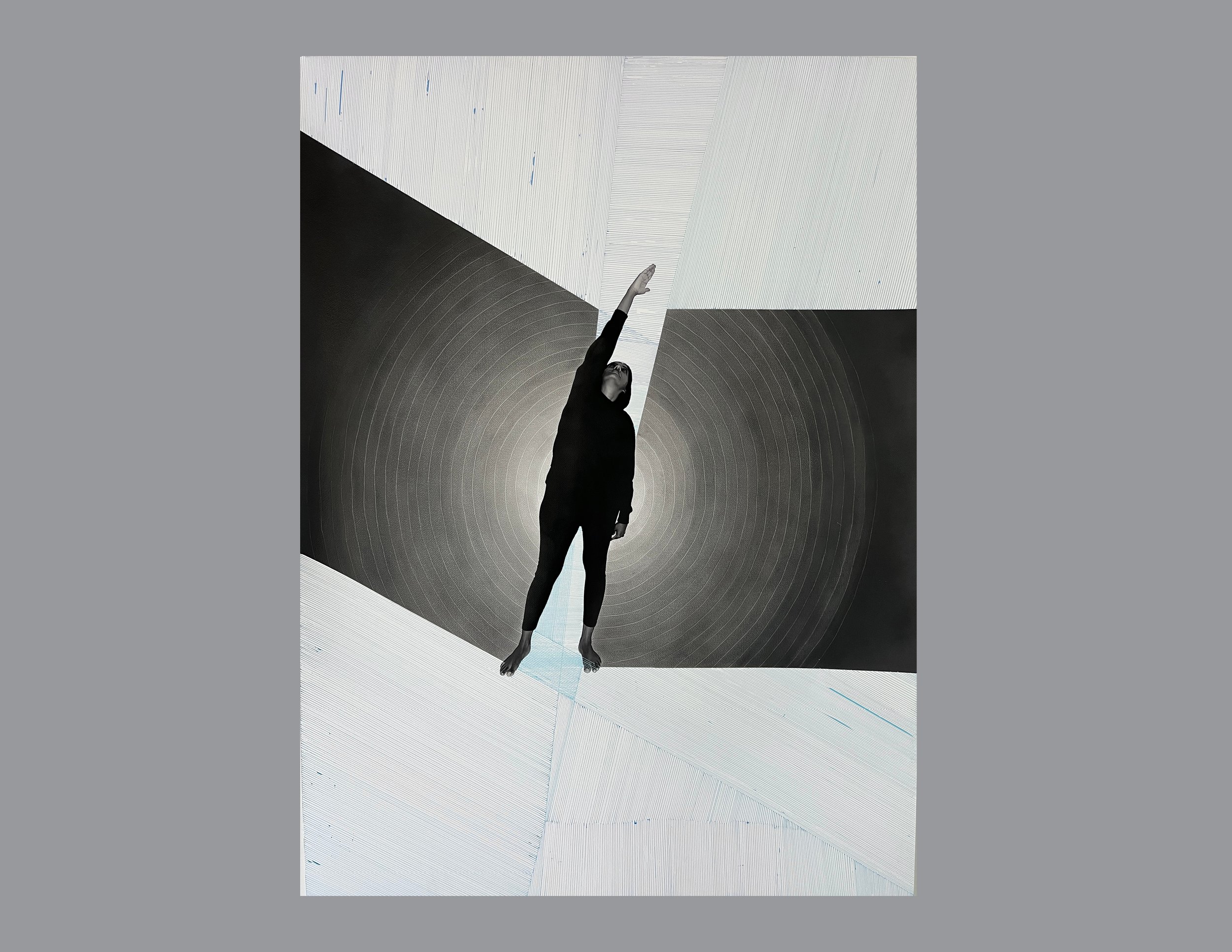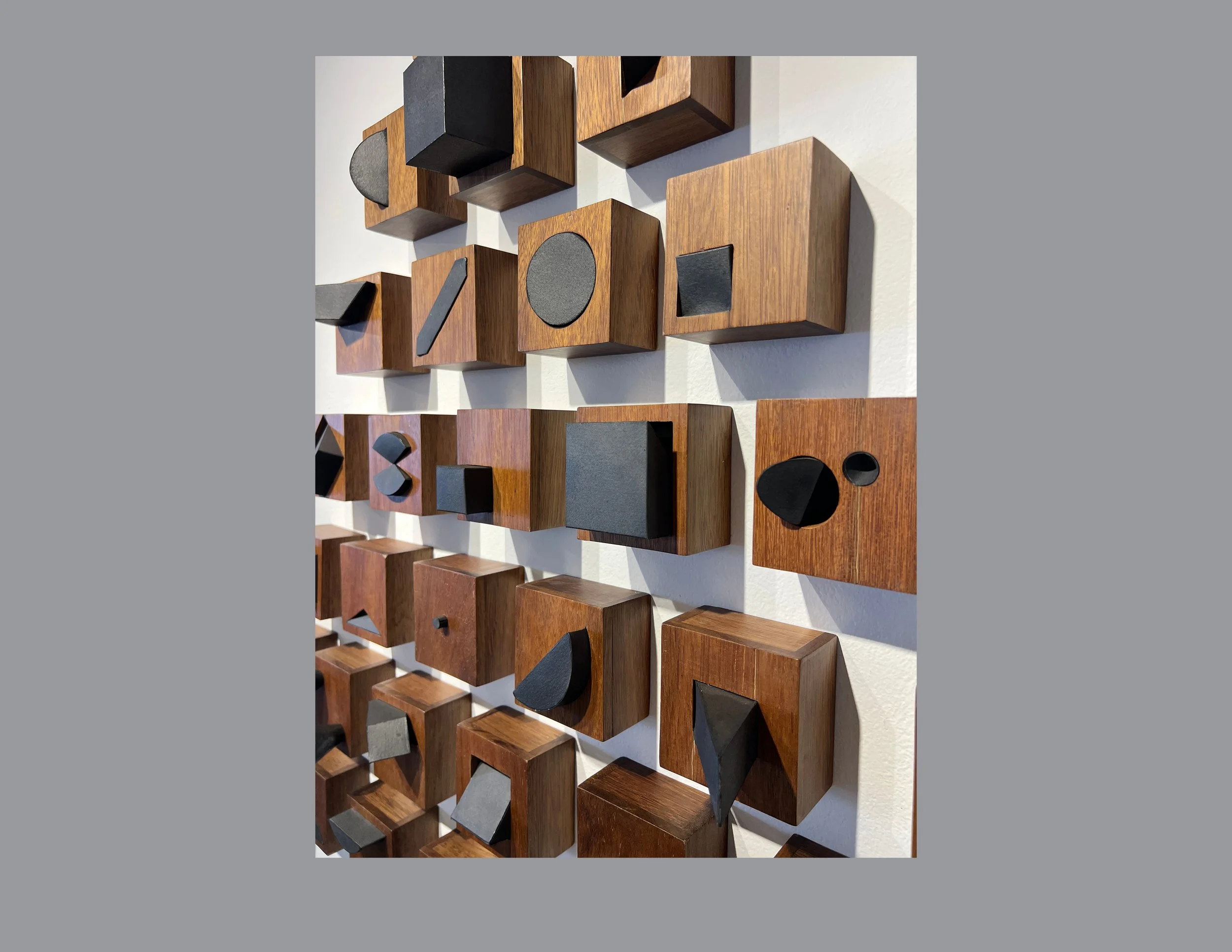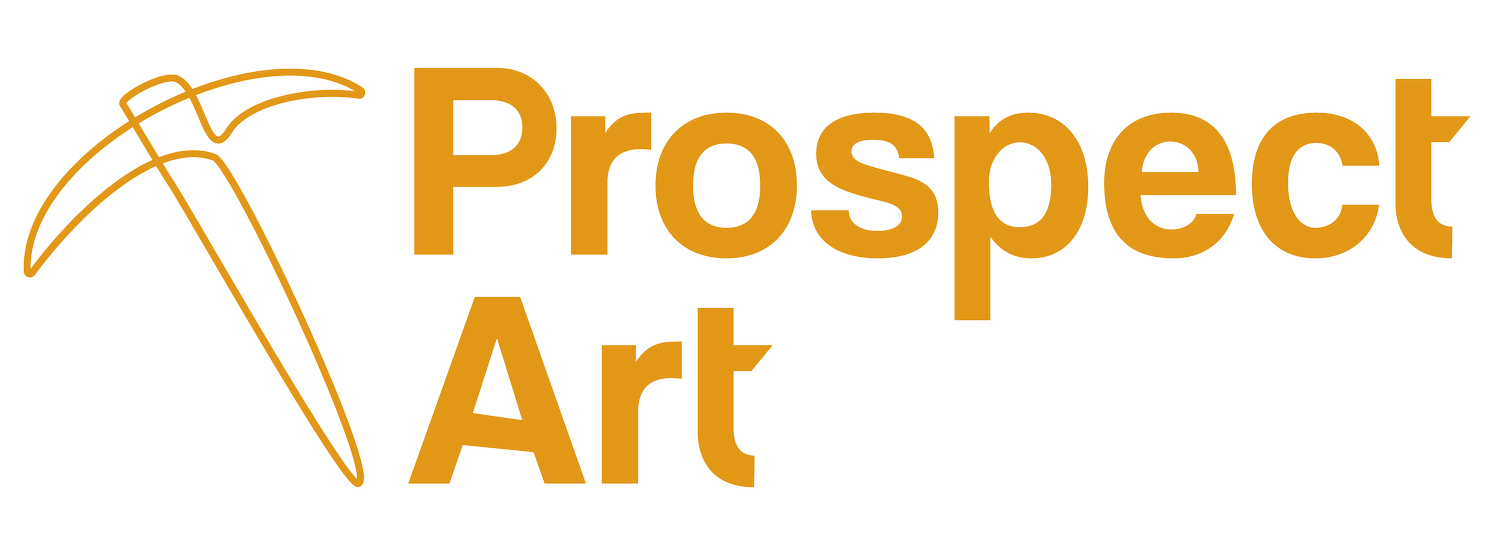Minna in fourth-dimensional land - A beautiful confusion.







There was a crooked man, and he went a crooked mile,
He found a crooked sixpence against a crooked stile;
He bought a crooked cat, which caught a crooked mouse,
And they all liv'd together in a little crooked house.
There Was a Crooked Man, an English nursery rhyme.
The artist, the mathematician, and the architect were walking close at hand, entwined in the fleeting dance of mind and sand. They enjoyed a pleasant walk—and a pleasant talk—along the salty beach when they found an odd, hole-filled rock. This discovery prompted a discussion about the mollusk’s reach in carving and inhabiting those spaces, and led them to wonder about houses of folding imagination that could connect distant places:
"What if we rotate the rock to see which holes we can peek through?" the artist suggested, prodding it with a finger to feel its shape. "A piddock made this. It was their home, but now they are all gone," she pondered. "They carve to fit in; it's their negative shape," the architect added. "It looks like a cone," the artist concluded. "Hey! Of course, mathematics can describe a piddock hole, as well as the rock holding the holes, using algebraic topology," the mathematician exclaimed.
An observation similar to the one fictionalized just now became the spark for Minna Philips's geometric graphite drawings,[1] igniting a deep creative journey. Repetitive lines and gradient shades of black fill a general cone shape, which transforms into a double cone with overlapped tips—resembling a sand clock, or a cosmic wormhole—through progressive explorations with superimposed geometries (Alternate Series, 2020). As she progresses through the conceptualized piddock hole with her imagination, a mixture of conceptual architectural projections and complex mathematical concepts emerges, as if it were a portal to the fourth dimension.
We might ask, what is the fourth dimension, and where is it? For now, and to avoid becoming overly puzzled, let us say that as three-dimensional beings, we cannot perceive it. However, we can use geometry to visualize it through analogies and projections. Geometry can provide tools to extend our understanding of three-dimensional space into an additional spatial realm. Algebraic topology, on the other hand, examines the broader concept of shape by focusing on large-scale features that remain unchanged by continuous deformations, such as stretching or bending. It distances itself from geometry, focusing instead on the global shape and connectivity of spaces.
Geometry is a notable characteristic of Minna’s artwork. Angles, corners, and curves shape many of her graphic and sculptural pieces. Her body appears within these forms, moving through a spatiality hidden from the casual observer but hinting at passages between enfolded places that demand apprehension (Dark Dimensions Series, 2024). In these pieces, her body signals directions as she raises a hand or brings her arms together and her legs apart while wearing a comfortable monochromatic attire. It is as if she is performing a meditative ritual or dance. Perhaps it is this bodily movement that shapes the space, and, like a piddock, creates an abode.
The artist and the architect blinked at one another while the mathematician went on with her undeterred exclamation. "Now, it may sound scary, but really it’s simply an ingenious manner of describing the very shape and structure of space itself, regardless of how near or far things may be, or even what angles they choose to take!" "Algebraic topology is a joyride!" The artist, doubtful, ventured into the complexity. "Well, I feel like I'm moving inside one of these holes, expecting to reach a single point of origin and expand from there into a multifaceted space. If that is indeed what you mean."
The mathematician paused, tapping a thoughtful finger against her chin. “How very clever! Not quite the thought dancing in my mind, but the body might just lead one’s sight through the tangled forests of shape and space. But tell me this—how do you picture a single point blossoming into higher dimensions, as there are many ways to construct this?” Before the artist could gather her thoughts, the architect jumped in with a bright smile, adding to the mathematician’s earlier declaration: “Spot on! Shifting distances and angles aren’t as tricky as they seem. I see it rather as a game of folding and unfolding, like a curious puzzle already rolling, before the body ventures inside the hole.”
But the artist was, as if swept away by a curious breeze, already gone. “Keep talking, my wondrous sisters, while I leap through. See you on the other side!”
In the endless play of who made whom, the space or the entity—like the chicken or the egg—we find an example of intra-action in Minna’s art-making process. As Karen Barad defines it, “agencies are only distinct in a relational, not an absolute, sense; that is, agencies are only distinct in relation to their mutual entanglement.”[2] This means that intra-action sees the relational as the formation of the related, highlighting the interconnectedness of everything. Biologically, it is accurate to say that the piddock carves its burrow, and the burrow shapes the piddock. Then, would it be a stretch to say that Minna makes the art that makes Minna?
Space can be seen as a continuous topology where insides and outsides emerge through folding and unfolding rather than being fixed opposites. Gilles Deleuze develops this in his philosophy, using the fold as a metaphor and ontological principle expressing continuity and interconnectedness beyond binaries. Since 1988, architectural theory and practice have embraced the fold, encouraging fluid and integrated forms (Hadid, Gehry).
Minna’s work combines folded and cut-out paper, graphite, and wood into drawings and volumetric objects (Paper Sculptures 2020–2022). Through these topological explorations, she examines spatial connectivity and continuity. Her recent volumes visually connect to her geometric drawings of repetitive lines and gradients, presenting each as an extension of the other. Together, they offer a metaphorical bridge traversed by imagination, inviting viewers to find a precise fit by moving around them.
Still, with Deleuze’s proposed ontology of continuity and connection, we can trace Minna’s path, which is less about folding—she primarily uses cutting in her sculptures—and more about inflecting a change in trajectory. As she moves through spatial forms, her body becomes a site of knowledge production. This gives rise to a new and unforeseen direction, which conceptually might enable us to jump dimensions.[3]
At the far side of the piddock hole, precisely one dimension above. Not left, right, back, front, up, nor down—the mollusk’s void was an interdimensional portal for all. The artist waited with amusement for her two companions, the mathematician and the architect. “Now you look tall, and now you look small,” she said, noting the curious tension such a passage entails. “Oh, but don’t you laugh, little sister, for you look flat!” said the architect as she passed through. “One of us is yet to arrive,” the artist added, referring to the mathematician, who, by her own calculations, would surely prevail.
“Please excuse my delay. I was trying to understand through mental calculations what is happening all around.” What previously looked like a continuous, smooth surface is now gradually folded into ridges and corners. “We are witnessing the transformation of a manifold into a polytope of four orders, through a sharpening process of space accommodating a parallel direction to all others,” the mathematician riddled, as she joined the involuntary dance her companions had already started.
A crooked house
Unlike the fictional architect in the slanted narrative texts guiding this essay, another architect, Quintus Teal—one of the main characters in Robert A. Heinlein’s 1941 short story And He Built a Crooked House—not only dared to grapple with the concept of the fourth dimension but also built a fourth-dimensional house shaped like an unfolded tesseract. Here, “unfolded” refers to a three-dimensional projection of a fourth-dimensional hypercube, the tesseract.
“I think of it as a machine for living,”[4] said Quintus to justify a self-imposed complexity, imagining himself as the champion of hidden passages and multifunctional spaces in a time when advanced technology and science meet architectural design. He also said to be “thinking about a fourth spatial dimension, like length, breadth, and thickness.” Far from the idea of an unknown and mysterious new direction in which to move.
And He Built a Crooked House is also the title of a conceptual artist's book in which Minna deconstructs a tesseract by removing pieces drawn on individual pages rather than unfolding it. Geometrically precise cutouts allow viewers to see the tesseract before turning the pages. By reworking this hyper-cube as a tactile, perforated artist's book, Minna reclaims abstraction through touch, multiplicity, and permeability. The artist's book, rich with geometric drawings, functions as a mini-exhibition that explores the complexity of higher-dimensional geometry from a visual perspective.
However, let us not rush into the aforementioned interpretation, since And He Built a Crooked House is also the name of Minna's latest exhibition, which features various works in an installation format and a special presentation of the artist's book at the exhibition's closing—Phew! Raise your hand if your head is spinning right now. Has it ever happened to you that when folding origami, the clear, well-drawn geometry of each step becomes progressively misaligned as you make creases and valleys? And you end up with a crooked origami cat? After reading about interdimensional piddock holes, folding topologies, complex mathematics, co-constitutional actions, and hypercubes, it is only logical to be beautifully confused.
***
Minna currently lives and works in Los Angeles, California, but she was born in India. Her life experiences in both places connect when overlapped or juxtaposed. However, as with anyone who has moved so far away, some facets of her life do not coincide, at least not from all angles. To commit to and adjust to these multiple viewpoints, she often recalls her mother's advice: “Widen your perspective.”[5] Minna’s artistic work represents an emotional and mental journey that unites different cultures and parts of herself. It highlights the challenges and adjustments she navigates in cross-cultural living, emphasizing openness, connection, and finding belonging despite differences.
Two parallel procedures can be identified in Minna’s work: one conceptual or intellectual, and the other experiential or affective. It is important to remember that these are not opposed to each other, but rather emerge from her wider perspective.
Regarding the conceptual/intellectual procedure, we observe mathematical references and structured, repetitive actions—such as drawing a straight line—that may appear minimal or limited in isolation. Conceptual artists have extensively explored this method of construction, often using an economy of means to foreground ideas as the primary focus. Sol LeWitt exemplifies this approach, famously stating that “the idea is a machine that makes the art.”[6] Throughout much of his career, LeWitt emphasized “logical statements using formal elements as grammar,”[7] privileging a systematic and depersonalized logic.
When looking closely, Minna’s work often visually resembles LeWitt’s. Examples include the use of hand-drawn lines in Wall Drawing #1: Drawing Series II 18 (A & B) (1968); the book Incomplete Open Cubes, published by John Weber Gallery (1974), which is a compendium of transformational geometry; and volumetric geometric abstractions that connect with wall drawings in the Complex Forms series (1980).
What idea might Minna be highlighting in her work? Is it perhaps the navigation and connection of cross-cultural identities and boundaries? Unlike LeWitt’s rationalist framework, Minna’s practice emphasizes embodied experience and symbolism, reflecting life between cultures. While their works share formal and visual similarities, Minna’s art expresses a dynamic interplay of affect, identity, and cultural hybridity absent in LeWitt’s more austere conceptualism.
Now fully immersed in the experiential/affective procedure, Minna’s body, surrounded by lines in the flat plane of her graphite drawings, expands into spatiality and suggests unexpected connections between shifting geometric perspectives. One need only see the polyhedral-pyramidal volumes placed in front of her drawings to imagine a dimensional expansion similar to Helio Oiticica’s Penetráveis (1960–1979). These were large-scale installations comprising movable panels, fabric, and other materials that encouraged bodily engagement.
Oiticica and Minna explore abstractions of habitational spaces with varying degrees of detail and social commentary. In comparison, Minna’s work is minimal with no references to daily life—neither personal nor communal as in Oiticica’s work. The complex geometry of her work provides an opportunity for activation as bodies move through it. “Reassessing my center shifts my perspective. It has helped me to adapt.”[8]
Art as home
So far, we have interpreted Minna’s body, immersed in her geometric drawings, as a ritual or a dance. But what if Minna performed domestic routines like working, sleeping, and eating? Could the mundane be waiting to appear, lost in folds and connecting angles? Surfacing through cuts? A house, a protective borough, is where the tedious and repetitive emerge. Minna’s actions beyond mark-making—cutting paper, piercing surfaces—register interruption and vulnerability. The cut becomes a non-heroic, situated intervention articulating difference within connection and protection.
Minna’s art re-appropriates the tesseract—once a hard sci-fi device for spatial speculation—as a topology of belonging and self-construction. It creates a space of multiplicity that permeates the fold and cut as connectors between cultures and dimensions. Through this, she crafts a dialogue between form and identity, challenging traditional narratives of separation.
A. Kuri
Montevideo, 2025
——————————
References:
[1] Minna Philips, email interview, September 24, 2025.
[2] Karen Barad, Meeting the Universe Halfway: Quantum Physics and the Entanglement of Matter and Meaning (Durham, NC: Duke University Press, 2007), 33. Karen Barad is a pioneering figure in feminist materialism, particularly known for developing the theory of agential realism: nothing exists independently before connecting. This means reality is always created through ongoing relationships, and both matter and meaning are intertwined and constantly changing.
[3] A line, a split, and a fold is an iterative conceptual mechanism devised by Rob Bryanton to jump up to ten dimensions. As he explains it in the famous animated video “Imagining the Tenth Dimension” https://www.youtube.com/watch?v=JkxieS-6WuA
[4] Heinlein, being an engineer who incorporated an architectural sensibility into his storytelling, quoted the most famous architect of the time, Le Corbusier. Perhaps he did so to lend credibility to his fictional character or to portray him as an unrepentant idealist.
[5] Minna Philips, email interview, September 29, 2025.
[6] Sol LeWitt, "Paragraphs on Conceptual Art," Artforum, Vol. 5, No. 10, Summer 1967.
[7] Sol LeWitt, SOL LEWITT, ed. Alicia Eegg, with essays by Eucy Eippard, Robert Rosenblum, and Bernice Rose (New York: The Museum of Modern Art, 1978), 174, reprinted from Flash Art (Milan), June 1973.
[8] Minna Philips, email interview, September 31, 2025.
——————————
Image list:
All images Courtesy of the Artists.
Image 1:
Image 2:
Image 3:
Image 4:
Image 5:
Image 6:
Image 7: Installation view, Winslow Garage, 2025.
